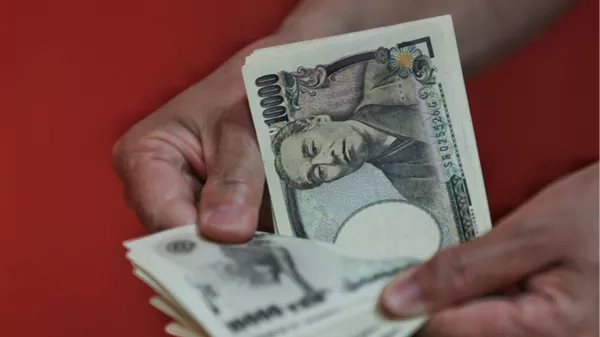The Japanese Yen (JPY) continued its downward trajectory for the third consecutive day on Wednesday, reaching a one-week low against the US Dollar (USD) during the Asian trading session. The Yen’s decline comes amid growing concerns that US President Donald Trump’s tariffs on commodity imports could destabilize Japan’s economy, alongside a broader positive sentiment in global equity markets that is weakening demand for the Yen as a safe-haven asset. Additionally, a rise in USD buying helped lift the USD/JPY pair closer to the mid-153.00s in recent trading.
Federal Reserve Chairman Jerome Powell’s comments on Tuesday added further pressure on the Yen. Powell stated that the US central bank was not rushing to cut interest rates, citing concerns over inflationary pressures linked to Trump’s trade policies. This rhetoric boosted demand for the US Dollar and dampened expectations of a narrowing US-Japan interest rate gap, which typically supports the Yen. However, expectations that the Bank of Japan (BoJ) may raise interest rates again could help limit further declines in the Yen.
US Tariff Announcement Hits the Yen
Trump’s announcement on Tuesday, which imposed 25% tariffs on steel and aluminum imports starting March 12, along with his suggestion of future tariffs on automobiles, pharmaceuticals, and computer chips, has sparked fears of escalating global trade tensions. These moves have raised concerns about their impact on the Japanese economy, contributing to the Yen’s decline. As the USD/JPY pair continues its recovery from a near two-month low last week, Japan’s Finance Minister Katsunobu Kato stated that the government would assess the tariff impact and respond accordingly. Similarly, Japan’s industry minister Yoji Muto has requested that Japan be excluded from the new tariffs, though these statements have had little effect on stabilizing the Yen.
Fed‘s Hawkish Tone Boosts US Dollar
Fed Chairman Powell’s testimony before the Senate Banking Committee on Tuesday struck a hawkish tone, asserting that the US economy remains strong with solid labor market conditions. Powell also noted that while inflation is nearing the Fed’s 2% target, it is still slightly elevated, and emphasized that there was no urgency to cut rates. These comments, combined with rising US Dollar demand, have contributed to the Yen’s weakness.
At the same time, BoJ Governor Kazuo Ueda reiterated that the central bank would adjust monetary policy as necessary to achieve its 2% inflation target. Recent wage growth and broader inflationary pressures in Japan are fueling expectations that the BoJ could raise rates as soon as the March policy meeting.
Looking Ahead: US Inflation Data and USD/JPY Outlook
Traders are now awaiting the release of the US Consumer Price Index (CPI) for January, which is expected to show a 2.9% year-over-year increase, with core CPI rising 3.1% year-over-year. These figures, alongside Powell’s remarks, are expected to influence the USD/JPY pair in the near term.
From a technical standpoint, a sustained break above the 152.75 level—comprising the 23.6% Fibonacci retracement of the January-February decline and the 200-day Simple Moving Average—could act as a catalyst for further gains in USD/JPY. However, oscillators on the daily chart remain in negative territory, suggesting that any upward movement may face resistance around the 154.00 level, where the 38.2% Fibonacci retracement coincides. A break above this level could see the pair move towards the 154.70-154.75 region and eventually challenge the 155.00 psychological mark.
On the downside, the 153.00 level, followed by 152.75, may act as support. A break below 152.75 could lead to a further drop, with the pair potentially falling back to the 151.30-151.25 range, or even revisiting the sub-151.00 levels seen last week.
Related Topics:




























